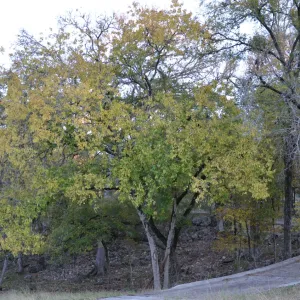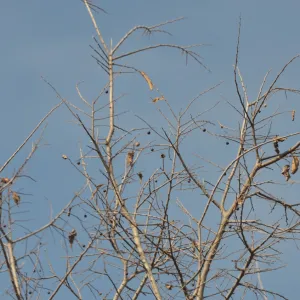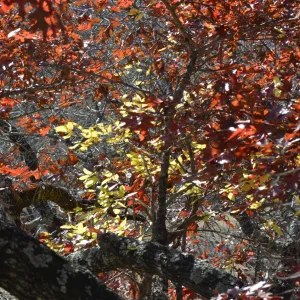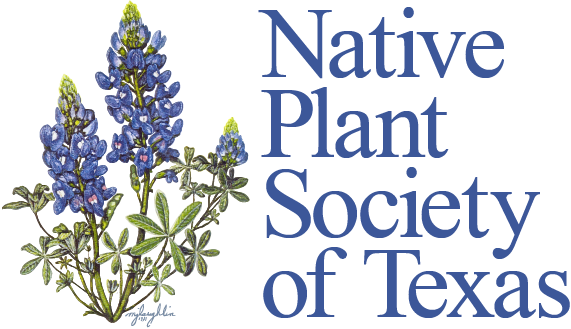By Delmar Cain
By Delmar Cain – Boerne Chapter, Native Plant Society of Texas
Published in the Boerne Star on January 3, 2014.
I am writing this article shortly after Christmas and am reminded of the old proverb “one man’s meat is another man’s poison.” Poison or not, too much at Thanksgiving or at Christmas dinner can lead anyone to discomfort. Even cedar waxwings can overindulge on berries to their detriment at this time of the year.
After the New Year I intend to do better for myself and also give the cedar waxwings a healthy option to the invasive pyracantha and its berries which seem overly abundant. I intend to plant a few of the Boerne Chapter’s NICE Plant of the Month for January—the Palo Blanco or Netleaf Sugar Hackberry (Celtis laevigata var. reticulata). Well, of the three species and two varieties of hackberry trees that the Boerne Chapter is recommending, that is the variety that I am planting. If I can find the spiny hackberry, I will plant it also.

The sugarberry hackberry (Celtis laevigata) was one of the earlier hackberries that has been scientifically identified in the United States. Distributed through most of the states except those along the middle northern border, it was named by Carl Ludwig Wildenow, a German botanist who lived from 1765-1812. His extensive collection of plants taken to Germany from over the globe formed the beginning of the collection for the Berlin Botanical Garden.
Two other varieties of the sugarberry hackberry are native to our area. The netleaf hackberry (Celtis laevigata var. reticulata) and the Texan sugarberry (Celtis laevigata var. texana) have much smaller areas of distribution. The netleaf hackberry grows naturally from Louisiana westward to Washington State. The Texan sugarberry grows from New Mexico covering six more middle states to Illinois.
The dwarf hackberry (Celtis tenuifolia) is a different species, which seldom exceeds a height of 25 feet. It grows naturally from Texas east to the Atlantic and northeast into Canada. Finally the spiny hackberry (Celtis ehrenbergiana) grows natively in four states-Texas, New Mexico, Arizona, and Florida, where it is listed as endangered. A small tree or shrub with thorns on its twigs, its distribution may indicate that it is not as cold hardy as some of the other species.
Hackberries are members of the Elm Family and like some other members of Elm Family have interesting corky looking warts or sometimes ridges on their bark. In the hackberry group it generally appears in the older bark and is more pronounced near the bottom of the tree.
The hackberries also have simple ovate (oval but broader at the base) leaves similar in shape to that of the elms. The leaves of the elms generally have teeth around the margins. The hackberries leaves have a smooth margin or widely spaced teeth.

Both elms and hackberries produce an enormous number of seeds. The elms produce a flat seed with a wing or samara. The hackberries on the recommended list produce a drupe or fleshy berry with a single seed inside. Because these trees are prolific seed producers and because the hackberry seeds are eaten by many species of birds and mammals, the wildlife in your area will beat a path or flight pattern to your tree.
Living on a small bit of acreage in East Texas, I listened to my dad evaluate the trees that he found growing there. If it produced something edible, like pecans or walnuts, if it would make a good post, like an oak or a bois d’arc, or best of all if it had larvae which made good fish bait, like a catalpa, then the tree did not get labeled a “trash” tree.

Hackberry trees never made the grade in my dad’s ranking system. They didn’t live especially long, they might get broken limbs in a windstorm, the wood was not good for posts or for firewood, the berries were not suitable for jelly, and they had a habit of showing up in several places in the area.

But I think if I had the opportunity to talk to my dad today and told him that hackberries are drought tolerant, grow in most types of soil, have beautiful yellow fall color, provide excellent food for wildlife and are host trees for several moths and butterflies, he would be willing to expand his ranking system. When presented with good, solid evidence, he was not bound by old prejudices. He would have made a good juror if you had had the facts on your side.
So, if you are ready for a change for the New Year, consider a hackberry tree. But if you are unwilling to change, you might remember another form of the old proverb, I mentioned at the beginning. It goes like this: “One man’s trash is another man’s treasure.”
For planting instructions and care, go to the Plant of the Month on the Boerne Chapter NPSOT website at: http://www.npsot.org/wp/boerne/
